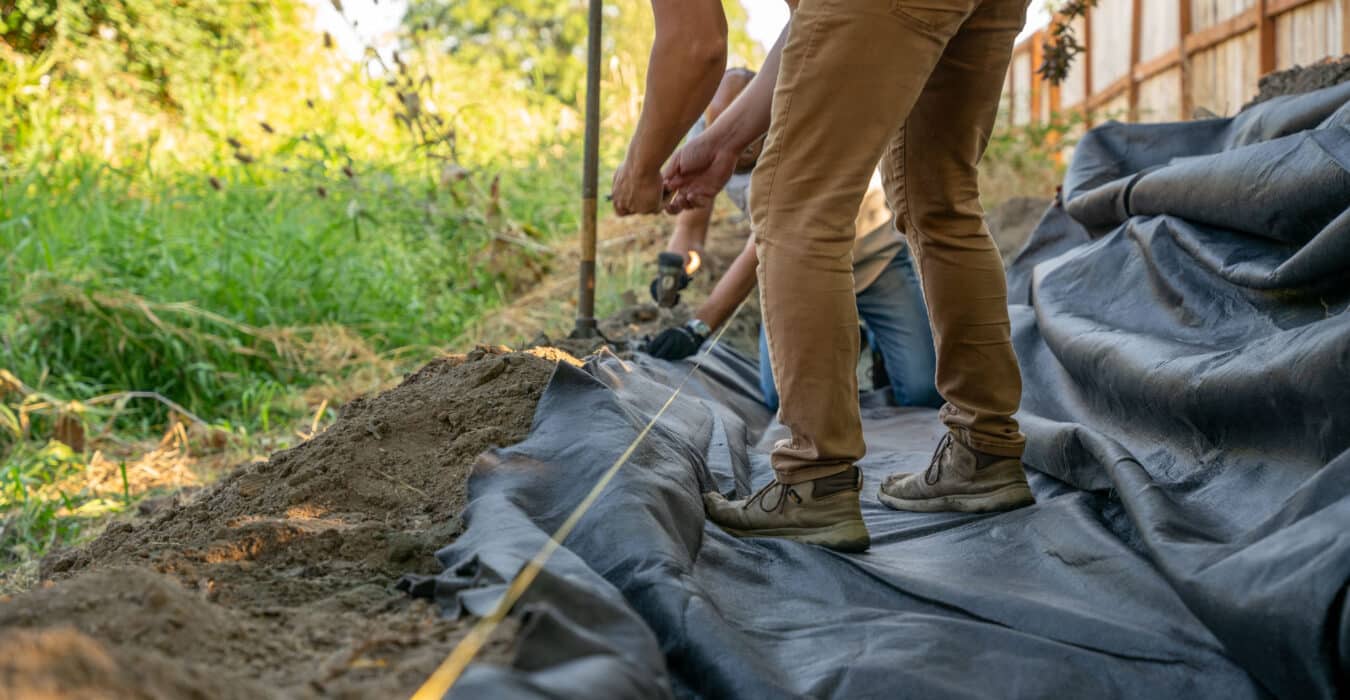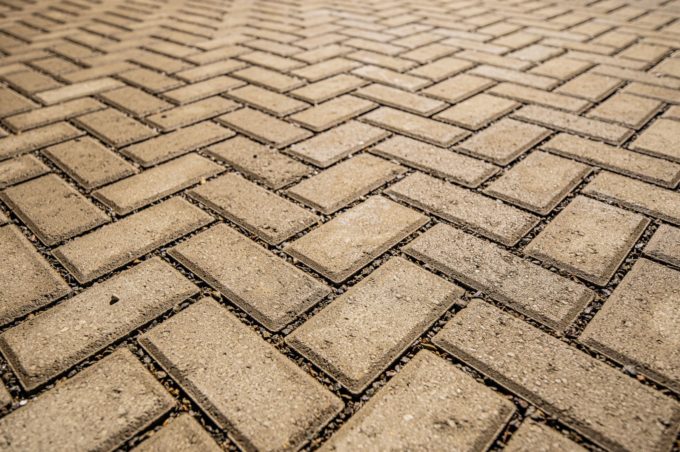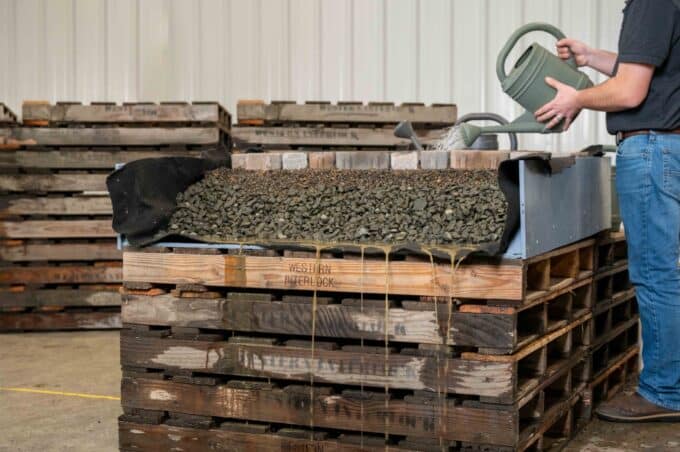Are you wanting to know more about geogrid in hardscape? If you are preparing to install pavers in your yard, you’ve likely been advised to implement geogrid in whatever hardscape you install. But when should you use geogrid? What is its purpose? How long does geogrid last?
In this blog post, we’ll answer the most frequently asked questions about geogrid so that you can be equipped with knowledge before you begin your hardscape project.
1. When should you use geogrid?
Geogrid is used in almost every type of hardscape—from driveways to walkways to patios and everything in between. However, it is essential in retaining walls, particularly those above three or four feet.
Geogrid should be implemented whenever you want your hardscape to last and stay structurally sound.
It is better to install geogrid and learn later that it might not have been necessary than to skip using it and have your wall crumble a few years later.
2. What is the purpose of geogrid?
Geogrid is used in slope stabilization, soil stabilization, and soil reinforcement. Geogrid is crucial in keeping your hardscape interlocked while the environment around it naturally swells, shrinks, and shifts in response to climate and seasonal changes.
3. Do all retaining walls need geogrid?
Yes, it is ideal to use geogrid in all retaining applications. For most man-made retaining wall blocks, geogrid is desired at 36”-48” exposed wall heights.
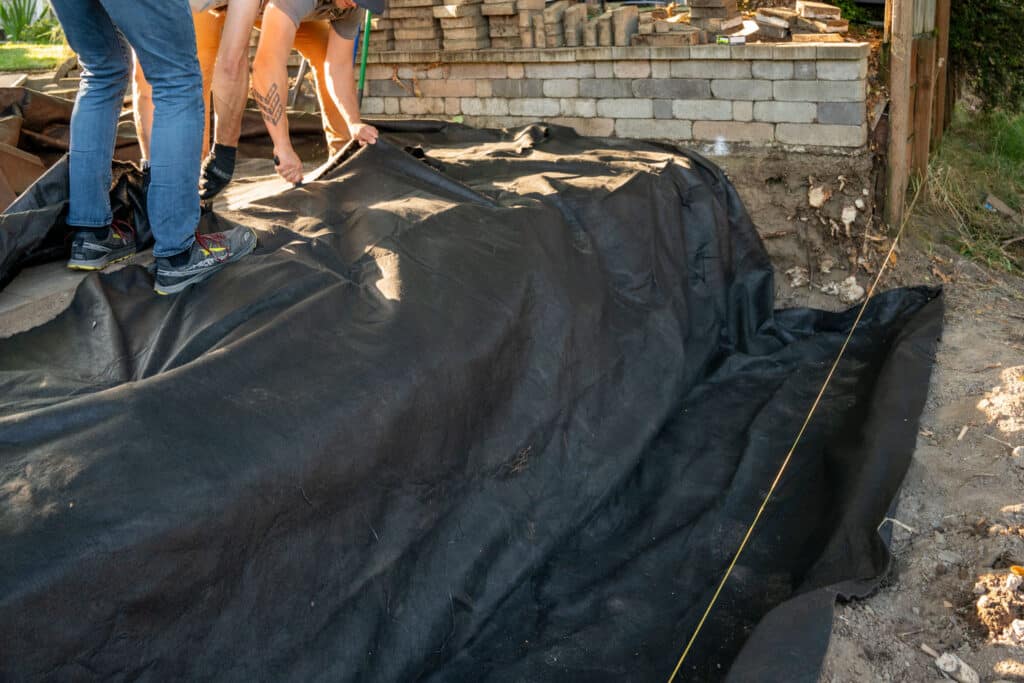
If steep slopes are near the wall, loading above the barrier, tiered walls, or poor soil, geogrid becomes even more necessary, regardless of wall height.
4. What can I use instead of geogrid?
Products such as a weed barrier or orange safety fencing are not the same thing as geogrid. Geogrid is intentionally designed with specific ribs and patterns to minimize shifting and settling.
The cost of implementing geogrid in your initial installation is well worth the alternative of rebuilding your hardscape after only a few years.
Woven textiles can provide a highly efficient and cost-effective alternative to rigid polypropylene geogrids for base stabilization applications. However, if the instructions for your retaining wall block tell you to use geogrid… do use geogrid.
5. How long does geogrid last?
Your geogrid will essentially last forever.
Tests have shown that geogrid has virtually no degradation for exposure in an outdoor environment for 12 months. This means that degradation will not happen even if geogrid is left exposed to the elements.
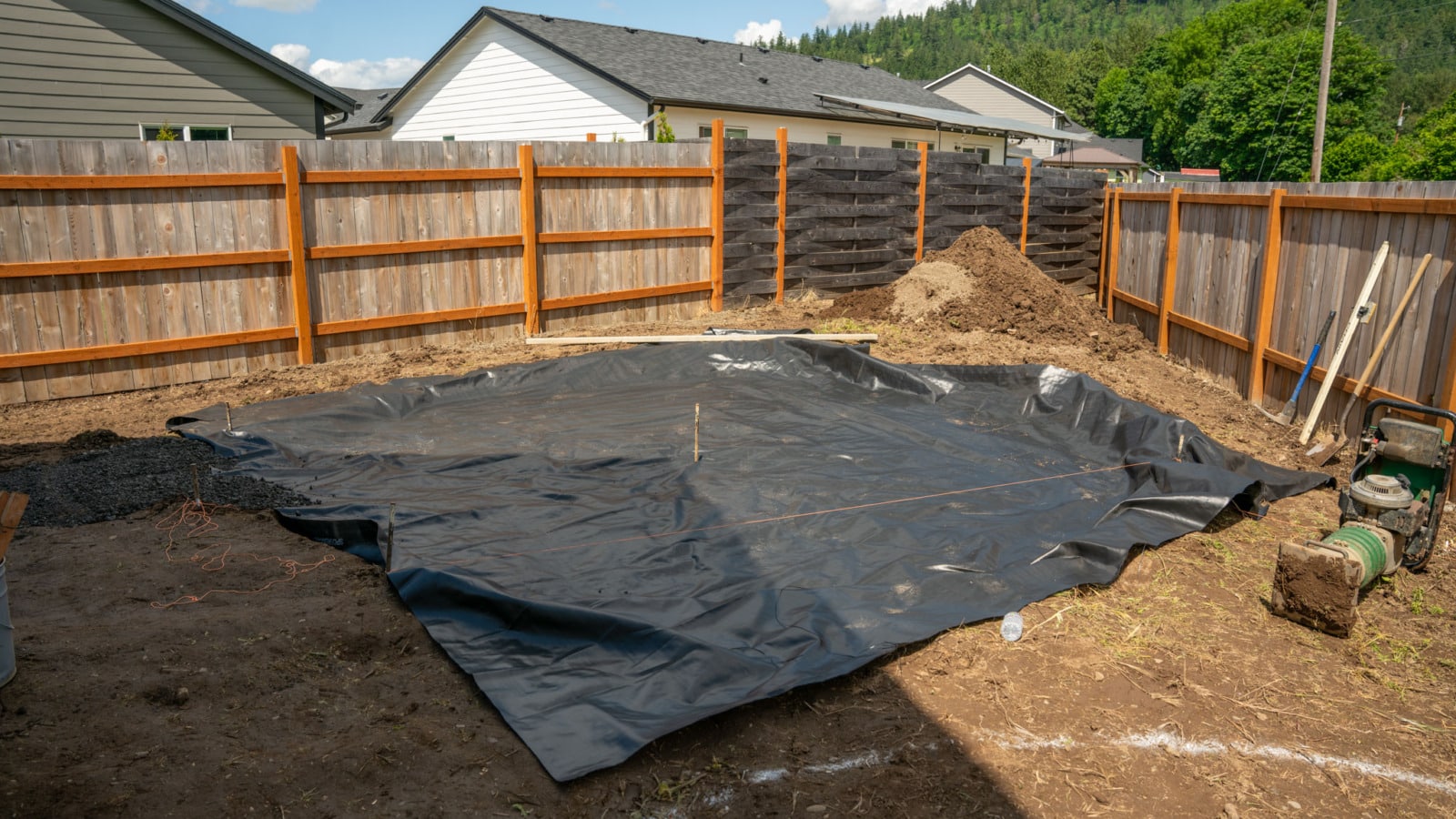
There is even less chance of degradation when geogrid is underground in a dense aggregate environment, as it usually is. Your geogrid will last as long as your hardscape—likely longer than you!
6. Can I use geogrid in concrete or asphalt?
Yes, you can and probably should. Geogrid reinforcement can be used in thin Portland cement concrete (PCC) members and overlays in pavements and other structures where steel reinforcement cannot be set due to constructability and strength impediments.
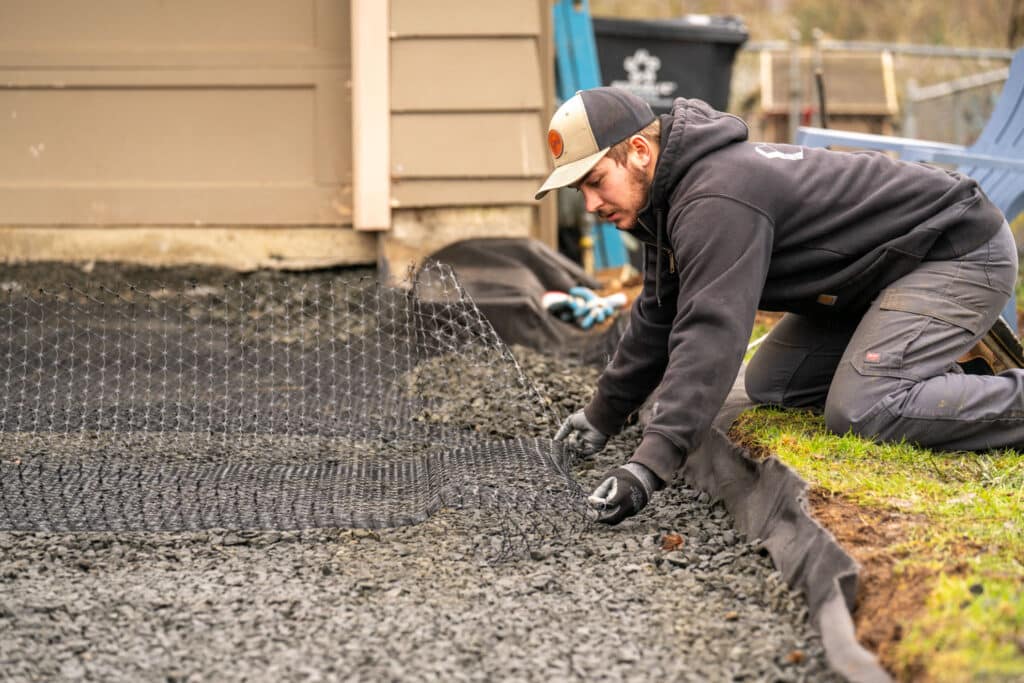
Incorporating geogrids into the roadway section effectively creates a stiffer, more uniform foundation that will maintain well and for a long time. You can read more in this article where the Arizona Department of Transportation describes how it used geogrid in the paving of US 89T.
7. What are the advantages of using geogrid?
Reduce excavation
If you use geogrid, you can reduce the depth of excavation required on unsuitable subgrades. This means less digging and excavation, making your project more straightforward.
Strengthen soil
Geogrid does wonders to strengthen the soil and provide enhanced safety and excellent seismic durability by stabilizing slopes. Geogrid ensures that your retaining wall won’t fall over!
Reduce settlement
Another advantage of geogrid is that it reduces differential settlement. Geogrids lessen the need for maintenance and extend the lifetime of paths, roads, walls, and more.
8. How strong is geogrid?
Geogrids have higher tensile strength than the soils they contain and, depending on their size, can endure heavy loads. With a tensile strength of 1885 lbs/sq ft, geogrid can easily withstand heavy vehicular traffic (even trucks carrying heavy loads), aid in retaining solid walls and steep driveways, and hold up under an extremely high volume of foot traffic.
9. Where is geogrid placed?
Geogrid is placed atop the subgrade (the primary layer of earth below your project) and below the AB (aggregate base). In other words, dirt, sand, or large rock should be below the geogrid and ¾”-0 road base gravel installed on top of it.
10. What is the difference between geogrid and geotextile?
Geotextiles are for separation, filtration, and drainage purposes, while geogrids are used specifically for reinforcement. If you want to build a strong hardscape, use geogrid.
Download our Planning Guide
If you need guidance for installing your hardscape (and geogrid), download our free Project Planning Guide.


